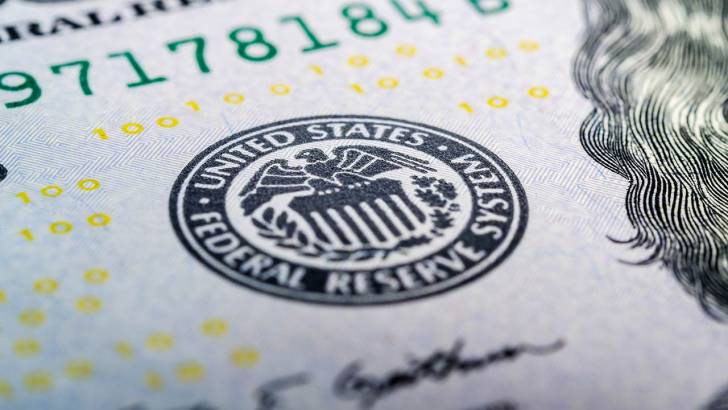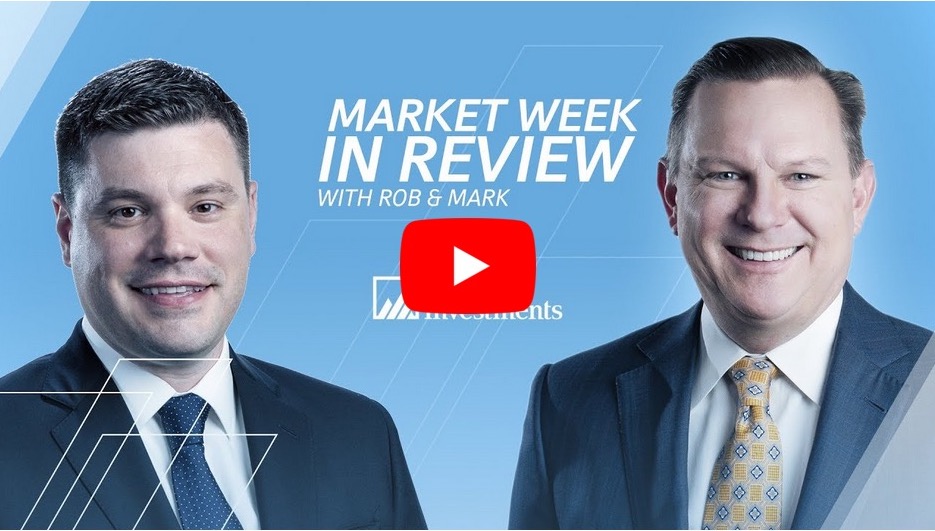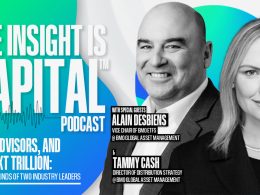by Jurrien Timmer, Director of Global Macro, Fidelity Investments
SEPTEMBER 2017
The Conversation We’ll Be Having for Years to Come
It’s time to consider what a return to conventional monetary policy could mean for asset valuations.
Key Takeaways
- Global stock markets continue to be resilient despite recent geopolitical pressures.
- Strong earnings growth and generally easy monetary policy around the world have helped prop up the markets.
- The big question facing investors for the next several years is how markets will react when central banks start to exit from this era of ex.traordinary monetary accommodation.
- The solid global economy, robust earnings, and low inflation could help central banks normalize with just a modest downward adjustment to the unusually favorable risk-return landscape.
- The low-vol march to Dow 22K and beyond
Volatility briefly returned to financial markets in mid-August, temporarily reversing the seemingly impossible disparity between low market volatility and high geopolitical and policy uncertainty. The VIX1 volatility index shot up to 17 (before settling back at 12), but that’s still well below where it could go if something truly bad happened. For example, the VIX flirted with 90 during the 2008 financial crisis.
I continue to believe that these are the “known” risks for the remainder of 2017: China has a post-reflation hard landing (not likely for 2017 but maybe in 2018?) The Fed tightens much more than the market has priced in (not likely for 2017, maybe in 2018?) A geopolitical shock (always possible, but impossible to predict) Barring an extreme geopolitical crisis, the known risks should be manageable, and a well-balanced, diversified portfolio likely remains the best solution for most investors. That said, however, the risk-reward trade-off for stocks during the past 18 months has rarely been more favorable. Since the first quarter of 2016, the S&P 500® Index is up 32%, versus a standard deviation2 of only seven. That’s three times the market’s average annual return against half its historical risk. This is unlikely to be sustainable over the long term.
That doesn’t mean a correction or a bear market is imminent. Historically, periods of low volatility can persist for some time. Case in point: Exhibit 1 shows that the current volatility of the S&P 500 is at its second-lowest level since 1970, against a year-over-year return that’s at the 56th percentile (meaning the market has had a lower return 56% of the time and a higher return 44% of the time). But as the chart also shows, in early 1996 volatility was at a post-1970 low while its return was near a post.1970 high (96th percentile). A year later, volatility shot up dramatically (36th percentile), but the S&P 500’s return remained high at the 82nd percentile. The message is that these regimes can persist for some time, and even when they end it doesn’t necessarily mean the market is going to plunge.
Meanwhile, the Dow Jones Industrial Average has eclipsed 22,000, another milestone for one of the biggest bull markets in history. As records continue to fall, it’s worth remembering that over the long run stock prices follow earnings, and earnings are on track to grow double-digits this year. It’s no wonder the market is reaching new heights. Easy financial conditions,3 a weaker U.S. dollar, and a synchronized global economic expansion (led by China) are an ideal trifecta for keeping this bull market going.
Source: Haver Analytics, MSCI, Fidelity Investments, as of Aug. 13, 2017. All indices are unmanaged. You cannot invest directly in an index. Past performance is no guarantee of future results.
Yes, U.S. stock valuations are high at 21 times trailing earnings, but without a catalyst in the form of weaker earnings (or an external shock), valuations can remain high for some time. And earnings are anything but weak. Second-quarter earnings for 2017 are currently running at nearly 12% year over year, on the heels of a 14% growth rate in Q1. There was a strong hint that this earnings season would be good when the normal downward seasonal drift in estimates heading into earnings season failed to materialize.
Because this is a synchronized global bull market, investors don’t need to look to the U.S. government to justify the Dow 22K milestone. As long as earnings continue to grow, fiscal stimulus is not needed for the bull market to continue. So it’s been relatively easy for the stock market to shrug off the lack of momentum in Washington on the fiscal front.
Meanwhile, with inflation still missing in action, the Federal Reserve (Fed) has the luxury of time to normalize its monetary policy. As of August 14, traders on the fed funds futures market lowered the odds of a December rate hike to 37%.4 Wall Street is now only pricing in 1.7 more hikes over the next two years (down from 2.3 in July), leaving the Fed’s dot plot (which suggests seven more hikes) out of synch with the market. This suggests the Fed may have some “dot tweaking” to do at its September meeting.
Despite some scary geopolitical headlines of late, the
U.S. dollar remains near its recent lows. This is not what one might expect, but this time the U.S. itself is part of the headlines. Of course, the diminished expectations for Fed rate hikes have something to do with this as well. Good thing global earnings are still growing double digits.
The conversation for years to come
Looking ahead to 2018 and beyond, the disconnect between what the Fed is signaling in terms of its policy normalization guidance (in other words, its plan for rate
“As long as earnings continue to grow, fiscal stimulus is not needed for the bull market to continue.” hikes) and what the market is pricing in could affect the current Goldilocks environment. How? It all comes down to the risk-free rate and how that affects the valuation of basically every asset class. The risk-free rate represents how much interest an investor would expect from a risk- free investment over a given period of time.
Central banks directly determine policy rates, but through quantitative easing (QE) in recent years, they’ve also indirectly influenced long-term yields (a.k.a., the risk-free rate). So, as the Fed, the European Central Bank, and other central banks look to exit from this era of extraordinary monetary accommodation, the conversation will inevitably turn to how this will affect the unusually low term premium (the premium that investors demand for buying long duration bonds), and, therefore, the risk-free rate.
If the reversal of QE causes the term premium to rise to more historically consistent levels (one to two percentage points above the current 2.23% yield for the 10-year Treasury5), it could affect the valuation of pretty much all financial assets, from stocks to Treasuries to high-yield corporate bonds to real estate. For bonds, the valuation effect is pretty straightforward: The risk-free rate directly impacts the yield, which directly impacts the security price and, therefore, the total return. Then it’s just a question of the degree of adjustment. The higher the yield and the lower the duration, the less the adjustment (same for high-yield corporates as well). The lower the yield and the longer the duration (i.e., long-term Treasuries), the greater the adjustment.
For stocks it’s a bit more nuanced, since the risk-free rate is only one of three components needed to value equities. The most important component is the expected earnings growth over time. But the discount rate (the rate against which this earnings growth is discounted) is important as well. If the discount rate rises because the risk-free rate rises, the valuation for equities will fall (all else being equal). That doesn’t necessarily mean the stock market goes down, just that investors should assign a lower multiple because the value of earnings is lower. How that affects stock prices will depend on how much earnings are growing. The greater the earnings growth, the more resilient the stock market will be to any rise in the term premium and risk-free rate.
The timing and degree of policy normalization in the coming years will likely come down to the overall growth environment and inflation. A stronger economic landscape and earnings picture will allow the central banks to normalize faster than a weak one. And today’s low inflation rates afford the central banks (and the markets) the luxury of time to eventually reverse the asset purchases at a more modest pace. Some pundits are calling the markets a bubble, propped up by the current monetary policy regime of zero or negative rates and QE. Their theory is that when the central banks exit this regime, the bubble will burst. While there’s no question in my mind that stock and bond valuations have been inflated through monetary policy, I would hardly call it a bubble. Such a drawdown would likely bring the risk-return ratio back in line with historical norms. But a complete unwinding of the current monetary policy regime seems very unlikely to me, which suggests any potential correction could be quite a bit less.
All in all, if market and economic conditions warrant a return to more conventional monetary policy, perhaps we should celebrate that, even if it means a modest downward adjustment to the unusually favorable risk-return landscape we’ve all gotten used to in recent years. But it will be up to the central banks to find the right pace of normalization.
Author
Jurrien Timmer l Director of Global Macro, Fidelity Global Asset Allocation Division Jurrien Timmer is the director of Global Macro for the Global Asset Allocation Division of Fidelity Investments, specializing in global macro strategy and tactical asset allocation. He joined Fidelity in 1995 as a technical research analyst.
For Canadian investors
For Canadian prospects and/or Canadian institutional investors only. Offered in each province of Canada by Fidelity Investments Canada ULC in accordance with applicable securities laws.
Endnotes
1 Often referred to as the “fear” index, the Chicago Board Options Exchange Volatility Index, or VIX, represents a measure of the market’s expectation of stock market volatility over the next 30-day period. 2 Standard deviation is the statistical measure of market volatility, measuring how widely prices are dispersed from the average price. 3 As measured by the Goldman Sachs Financial Conditions Index. See index definition below. 4 Source: MarketWatch, “Bets on rate hike this year roll back in wake of weak inflation reading,” Aug. 14, 2017. 5 Source: FactSet, as of Aug. 17, 2017.
*****
Unless otherwise disclosed to you, any investment or management recommendation in this document is not meant to be impartial investment advice or advice in a fiduciary capacity, is intended to be educational and is not tailored to the investment needs of any specific individual. Fidelity and its representatives have a financial interest in any investment alternatives or transactions described in this document. Fidelity receives compensation from Fidelity funds and products, certain third-party funds and products, and certain investment services. The compensation that is received, either directly or indirectly, by Fidelity may vary based on such funds, products and services, which can create a conflict of interest for Fidelity and its representatives. Fiduciaries are solely responsible for exercising independent judgment in evaluating any transaction(s) and are assumed to be capable of evaluating investment risks independently, both in general and with regard to particular transactions and investment strategies.
Information presented herein is for discussion and illustrative purposes only and is not a recommendation or an offer or solicitation to buy or sell any securities.
Views expressed are as of the date indicated, based on the information available at that time, and may change based on market and other conditions. Unless otherwise noted, the opinions provided are those of the author and not necessarily those of Fidelity Investments or its affiliates. Fidelity does not assume any duty to update any of the information.
Investment decisions should be based on an individual’s own goals, time horizon, and tolerance for risk. Nothing in this content should be considered to be legal or tax advice and you are encouraged to consult your own lawyer, accountant, or other advisor before making any financial decision.
Stock markets, especially non-U.S. markets, are volatile and can decline significantly in response to adverse issuer, political, regulatory, market, or economic developments. Foreign securities are subject to interest rate, currency exchange rate, economic, and political risks, all of which are magnified in emerging markets
Investing involves risk, including risk of loss. Past performance is no guarantee of future results. Diversification and asset allocation do not ensure a profit or guarantee against loss.
All indices are unmanaged. You cannot invest directly in an index.
Index definitions
Standard & Poor’s 500 (S&P 500®) Index is a market capitalization-weighted index of 500 common stocks chosen for market size, liquidity, and industry group representation to represent U.S. equity performance. S&P 500 is a registered service mark of The McGraw-Hill Companies, Inc., and has been licensed for use by Fidelity Distributors Corporation and its affiliates.
Goldman Sachs Financial Conditions Index tracks changes in interest rates, credit spreads, equity prices, and the value of the U.S. dollar. A decrease in the index indicates an easing of financial conditions, while an increase indicates tightening.
The Dow Jones Industrial Average is an indicator of U.S. stock market prices, based on the share values of 30 blue-chip stocks listed on the New York Stock Exchange.
Third-party marks are the property of their respective owners; all other marks are the property of Fidelity Investments Canada ULC.
If receiving this piece through your relationship with Fidelity Institutional Asset Management® (FIAM), this publication may be provided by Fidelity Investments Institutional Services Company, Inc., Fidelity Institutional Asset Management Trust Company, or FIAM LLC, depending on your relationship.
If receiving this piece through your relationship with Fidelity Personal & Workplace Investing (PWI) or Fidelity Family Office Services (FFOS), this publication is provided through Fidelity Brokerage Services LLC, Members NYSE, SIPC.
If receiving this piece through your relationship with Fidelity Clearing and Custody SolutionsSM or Fidelity Capital Markets, this publication is for institutional investor or investment professional use only. Clearing, custody or other brokerage services are provided through National Financial Services LLC or Fidelity Brokerage Services LLC, Members NYSE, SIPC.
© 2017 Fidelity Investments Canada ULC. All rights reserved. US: 812255.1.0 CAN: 814878.1.0
Copyright © Fidelity Investments













